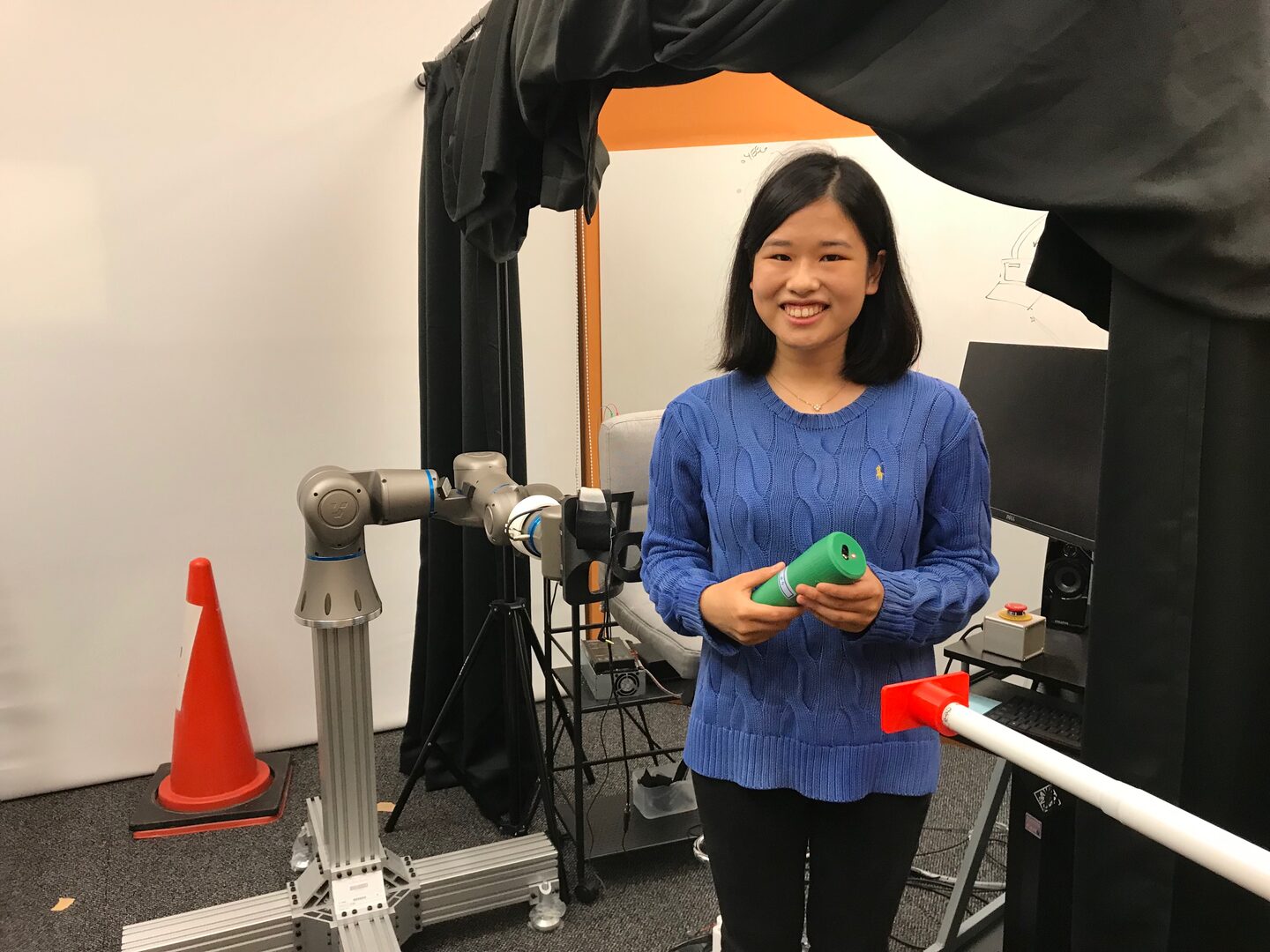Testimonial: Kanon Kobayashi
Ms. Kanon Kobayashi shares her experience as a research intern at Embodied Cognitive Science Unit led by Dr. Tom Froese.

1.How and why did you decide to apply for this program?
I have been very interested in how the brain processes and perceives auditory stimuli and have written review papers under the supervision of the Department of Psychiatry at Keio University, focusing particularly on the phenomenon of brain synchronization to auditory stimuli. I am also a student member of Arts Meet Science (AMS), which is an academic group that holds symposiums with OIST as well to discuss the interface between art and science. At the AMS, I have worked with art students to create artworks to promote interaction between the auditory, visual, and other senses. Then, I learned that the Embodied Cognitive Science Unit (ECSU) at OIST was scientifically testing philosophical hypotheses on perception and cognition with the theme of interaction and synchronicity. I had discussed the connection between philosophy and science at the AMS and could not miss this opportunity to discuss with and learn from the professional scientists. This is why I decided to apply for this program.
2.Please tell us what you expected from the program before participating in it and how you feel about your experience. (Please also include what you like about the program and areas for improvement if any.)
I was really amazed to see that all of the researchers seemed to be working without stress while focusing on work only the work hours and enjoying their private lives. In OIST's spacious and beautifully designed research facilities, there are a variety of spaces for individual work and its location surrounded by rich nature made it easy for me to refresh my mind. Everyone went home after 17:00, and the labs were almost empty on weekends, with no Slack or email exchanges. I have never experienced a lifestyle of separating the work and private life so clearly. The communication throughout OIST was also very good, more so than I had imagined. The ECSU members were all friendly and answered all of my questions with many suggestions. I learned a lot even through our daily conversations. The layout of the units in the research building, the joint lab desks, the lab rotation system for PhD students, and the club activities allowed the students to interact with each other beyond the units, and I was even able to make precious friends outside of my unit. I thought it would be perfect if there was a cafeteria on campus that is available in the evenings
3.What was your typical day like as an OIST research intern?
Embodied cognitive science deals with the philosophy of mind and explains that cognition is created when organisms actively interact with their environment using their bodies. I was involved in two experiments to test this in the laboratory and deepened my understanding by reading and asking questions on previous papers published by the unit and discussing them with the researchers. In Perceptual Crossing experiment, which focuses on the haptic interactions and synchrony between two people, we read and presented the latest related papers and discussed how the experimental system in our unit could be improved by referring to the ideas in these papers. In the Agency in Perception project to investigate the effects of active search on cognition, I learned how to run the experimental systems so that I could conduct the data acquisition by myself with general participants, and also conducted post-processing analysis. In addition, I participated in lectures for PhD students organized by ECSU, where we discussed basic concepts of embodied cognitive science by considering familiar examples, and asked neuroscientists about basic concepts of neurophysiological indices and functional brain imaging, as well as the latest research trends in details.
4.How did you spend your weekends?
I had a variety of adventures unique to the rich natural environment of Okinawa with my roommates and friends I met inside and outside my unit. We climbed Mt. Katsuu for an easy hike, went whale watching, snorkeled at Apogama Beach with full of coral reefs, walked upstream on a river in the mountains of Nago, kayaked among the mangroves and at the mouth of the river in Yanbaru National Park, and toured tourist attractions on bicycles rented from OIST. We also took a tour of tourist attractions on bicycles rented from OIST. As I became friends with students from various backgrounds and listened to them talk about their research, I became more interested in research topics that I had not been familiar with before.
5.Other (Free comments)
I found OIST to be a wonderful research environment with many advantages in terms of human resources, facilities, funding, and internationality, etc. ECSU was a unit that covered all the perspectives I wanted to learn, from philosophical ideas about cognition to more neuroscientific discussions, and actually being able to ask questions in detail and discuss with the researchers was a very valuable experience. I learned how to design scientific experiments to test philosophical questions and how to measure various physiological indices, which were directly applicable to my experimental design for the AMS project and review papers. This was a great opportunity for me as I want to become a neurologist and take the approach to the field from the perspective of cognitive neuroscience along with others. I truly appreciate this wonderful opportunity.



